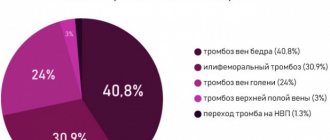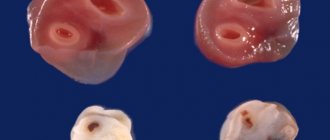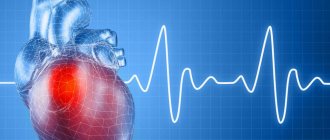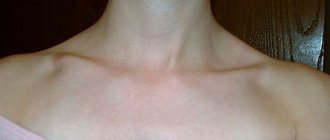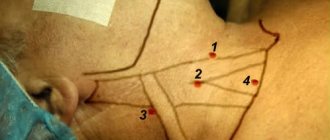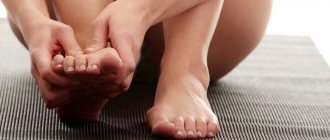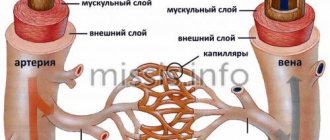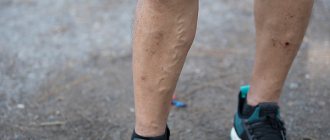- November 5, 2018
- Depressive states
- Natali Michaelis
Every person can be susceptible to mental illness, but not everyone resorts to mutilation of their own body or even suicide. In moments of despair, any little thing can seem like a catastrophe on a universal scale for a mentally unbalanced person. To prevent the worst and protect your loved ones from themselves, it is necessary to understand the main reasons why a person cuts his veins. In our article you will find a detailed answer to this question.
Why veins?
When answering the question of why people cut their veins, it is worth seeking help from specialists in the field of psychology. Most of them argue that cuts on the hands are almost always a demonstration of behavior in front of others. That is, a person subconsciously does not want to part with life, but with all his soul he wants the people around him to see the pain that he experiences. However, such actions can also lead to a tragic outcome.
This demonstration of behavior is most often characteristic of adolescents aged 13 to 17 years. At this stage of life, a person is most susceptible to the opinions of others, and every failure is perceived very sharply. The teenager begins to look for flaws in himself and causes harm to his own body, showing others that he hates himself.
How to identify venous bleeding and how to stop it
It is worth remembering that venous bleeding involves blood returning to the heart, so the pressure will not be as great as with arterial bleeding. However, blood loss can still be severe. Treatment is different for each type of cut. But there are general principles of first aid.
The first thing to do when cutting a vein is to apply pressure with your hands with a clean bandage or cloth on the wound site and hold the injured part of the body above the level of the heart, if possible. After these steps, the bandage is not removed to check the incision - this may disrupt the clotting process. Blood has a clotting mechanism, so when pressure is applied to a wound, then the bandage is removed, the clot is dislodged and the bleeding becomes even greater. If the bleeding is severe or does not stop after applying constant pressure, you should consult a doctor.
Body Contact
People who cut veins can have a very difficult time adjusting to the changes in their body. This is especially true in adolescence, when boys and girls stretch their legs and arms, their gait changes, and they gain or lose excess weight. During this period, the body can begin to behave rather willfully: treacherously spontaneous erections in boys or painful periods in girls. Such changes can begin quite unexpectedly when a person is at training or at school.
Some psychologists have reported that patients who self-mutilate have stated the following: “My body becomes something separate, it does not obey me, so the only way to get in touch with it is to hurt myself with a blade.” The behavior of such a teenager is similar to the actions of a sleeping person who wants to stop participating in a nightmare by pinching his hand.
Scary world
Why do people cut their wrists in adulthood? One of the most common reasons is the difficulty of living a full life in this world. Misunderstanding on the part of loved ones, a constant lack of money, the absence of a loved one nearby - all this leads to the fact that a person tries to injure himself in order to show others how much he is hurt.
In addition, people often experience the feeling that the world is hostile to them. Failures at work or on the personal front can gradually “suck” the life force out of a person, bringing him to the brink of suicide. In this case, it is important to help a comrade in trouble in time so that he can again see this world in bright colors. To do this, it is important to be aware of the symptoms of a mental disorder.
Basic methods of treating veins
After introducing the cytostatic into the cells, all that remains is to wait for the completion of the side process and help recovery.
The pathophysiology of drug-induced toxic phlebitis has been little studied, no clinical studies have been conducted on the problem, all recommendations are based only on the personal experience of medical personnel. In each case and after each administration, it is necessary to consult with the attending physician who knows the specifics of the local interaction of the cytostatic and the range of local adverse reactions.
To relieve pain and reduce inflammation, NSAIDs are best suited - non-steroidal anti-inflammatory drugs, but the benefits of any one drug have not been proven; it is better to rely on the patient’s “everyday” preferences, because sensitivity to pain is different, and the analgesic effect is also individual.
If there is a high risk of pulmonary thromboembolism, the patient is prescribed a special “blood thinning” therapy, usually long-term - at least a week and with regular monitoring of coagulation.
You can use ointments with heparin to rub into the area of the damaged vessel. Hepatrombin™ gel consists of heparin and prednisolone, the latter has an anti-inflammatory effect, the drug is not officially certified for use in peripheral phlebitis and thrombophlebitis.
Troxevasin™ ointment has a good reputation , which simultaneously reduces inflammation and swelling of tissues, changing the rheological properties of blood towards dilution, but less than is typical for heparin. However, studies have shown that the drug is capable of dissolving microthrombi.
Indovazin™ gel is a mixture of troxerutin and the NSAID indomethacin, therefore it reduces the severity of pain and does everything that is inherent in Troxevasin™. It is not advisable to combine both ointments, since the spectrum of action of the combined drug is greater, but with Indovazin™ it is quite possible to alternate the application of Hepatrombin™. The absorption of ointments is microscopic; they do not replace NSAIDs and anticoagulants taken orally, but they help to endure the unpleasant consequences of treatment.
Symptoms
It is not always possible to see cuts on your child’s arms, since those who cut their veins often try to disguise the wounds from others by wearing a long-sleeved shirt or using foundation. Therefore, it is worth paying attention to other symptoms of mental disorder that such people most often exhibit:
- detachment from the outside world;
- decline in school performance;
- depressive state.
You must know the psychological and behavioral characteristics of people close to you in order to be able to find out in time what exactly is bothering them. Most often, just one heart-to-heart conversation is enough to fully understand all the problems and find their solution.
How veins are restored after IVs: useful procedures
They try to reduce local irritation of the mucous membrane lining the inner wall of the vein by large dilutions and slow administration in droppers, literally over hours. Not all cytostatics can withstand high dilution and long administration; some lose their properties, so they are administered as a bolus using a syringe. In this case, immediately after chemotherapy, the vein is “washed” with saline, trying to reduce its damage.
Be sure to check the patency of the vessel and the possibility of extravasation - the spread of cytostatics in the tissue during microscopic ruptures of the vascular wall - before administration and during the drip.
It is recommended not to administer chemotherapy to the same vein; it is better to alternate hands, giving the vessel more time to restore its mucous membrane. The prophylactic use of ointments with heparin or troxerutin before chemotherapy has no pathomorphological basis, that is, it is useless.
When planning multi-month chemotherapy, it is advisable to think about installing a venous port; its service life is at least five years. The device completely eliminates such a side effect as drug phlebitis, but only taking anticoagulants can save you from thrombosis.
Pain as a painkiller
Continuing to understand why people cut their veins, we cannot fail to mention a fairly common explanation today: physical pain helps dull mental pain. It is worth noting that most psychologists agree with this statement. When a person looks at the blood pouring out of his body and experiences severe pain, he immediately forgets about the problems that previously worried him, because it seems that nothing is more important than our own life.
However, we should not forget that our body can adapt to any pain, including that which we inflict on ourselves. Over time, ordinary scratches with a blade become not enough for such people, and they begin to insert a sharp object deeper and deeper into their skin. Such actions often lead to severe bleeding and unconscious suicide.
Why do people cut their wrists in the bathtub? The answer to this question will be quite obvious. Blood can easily stain clothes and furniture, so most patients suffering from mental illness most often self-harmed in the bathroom in order to quickly wash off all traces with water.
First aid kit and other first aid notes
To stop severe bleeding, first aid can be provided using the items from the first aid kit that are listed below or available items. In case of emergency situations in which it is necessary to close the wound, store the following items:
- sterilized medical gloves;
- sterile gauze dressings;
- small scissors;
- medical tape.
If there is an open wound, rinse it with running water. Especially in case of contamination and ingress of foreign bodies, dust, and so on. Rinsing with a saline solution can also be helpful to clear away dirt from the cut without touching it. An antiseptic solution (hydrogen peroxide, chlorhexidine) applied to the site of injury will stop blood flow and also reduce the risk of infection in the body in the future. A good remedy for a small cut or scrape is hygiene. If possible, apply aloe or antibiotic ointment and then cover with a bandage to keep it clean.
In the case of a puncture or deep wound, stop the bleeding if necessary and go to the hospital. Even if it does not seem serious, preventive measures need to be taken to avoid consequences in the form of serious complications.
Dissimilarity from others
Unfortunately, people are increasingly cutting their veins because they stand out too much among others. However, such people do not understand that it is impossible to be like the absolute majority in everything. It is our unique character traits and features in appearance that make us individual. People hate themselves for what sets them apart from the gray mass, although this is their main feature. Most teenagers who cut their wrists reason something like this: “All my peers are absolutely normal, and I’m a freak because...” However, it is precisely what makes people different from others that very often leads to great popularity and fame, which is so desperately modern youth is trying to get.
We hope our article helped you understand why a person cuts his veins. Such behavior cannot be called something normal, but it is quite amenable to rational explanations if you have some knowledge in the field of psychology. Also, in conclusion, I would like to leave our readers with a short video in which a girl recites a poem. From it you can learn not only why a person cuts his veins, but also how to find the strength in yourself to live on, despite all the unpleasant circumstances.
Possible complications, prognosis
Often the consequences are the development and spread of various infections. They are accompanied by discharge of pus, an unpleasant odor, fever, dull throbbing pain, mild swelling and fever. The second most common consequence is inflammation. Inflamed wounds are hot, red, painful, and swollen. Scarring: The regenerated cells have different characteristics and fibrous tissue that can heal the wound but may leave a scar.
Loss of Function – Many injuries are disabling and life threatening if a major organ such as a blood vessel or nerve is cut. If the wound is still fresh or healing, the cut limb or area loses functionality until all lost or damaged tissue is restored.
